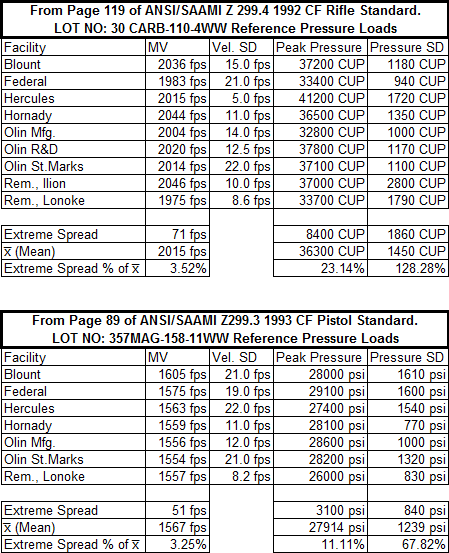This was a timely "pop-up" on my face book feed. I'm back loading .357 now.
The entire powder range for several common powders in my 1988 Speer book is higher than the entire range in my 2014 Speer book, knocking just under 200 fps off the .357. I started quite a fight on the forums asking why. I got dozens of guesses. Best guess, Some light .357s (S&W for police) were built for light .38 most of the time and the loads were destroying the guns over time when police went to .357 practice all the time, so they backed off because of those guns. I do not know the real reason, but I have 1000s of rounds fired under the old powder ranges with no ill effects. .357 was once a 1300 fps round, it now is loaded to 1000 fps, rarely touching 1200 in the book, if ever at home.
Alliant has the same 7.7 grn max under a 158 as the new books, NONE for true jacketed bullets.
I know Unique has changed to be cleaner burning. That "might" account for the change but H110, Blue Dot, 296 have all suffered the same fate.
I'm loading for a .357 lever and I am looking at a pile of books telling me not to load what I loaded in the mid-1990s and still shoot out of my SA.
I'm going to load a dozenish Unique and H110 at the old book and new book and crono, look at the brass and further ponder, but if they show nothing abnormal, I'm going retro back to a midrange 1988 load.
I've long believed that if the brass starts talking, you're way past right but
I'll look.
I have long thought reloaders accept far to little published data. Test methods, Pressure & velocity graphs with increased powder, primer variation impacts, origin of the specifications (expected failure modes/wear risks), specific gun considerations could all be linked from the bullet and powder manufactures. They should have the data. It will take a new powder manufacturer breaking in to change the culture though.
Like the .45-70, several calibers could have era/firearm dependent loads. Currently, we all load to the lowest common denominator, or work in the dark, reading the tea leaves (brass & recoil) or interpolating the single data point of velocity.
That might still be fine, if I didn't think my load data is being driven more by the lawyers than "modern firearms in good working order".
Rant ended.
The entire powder range for several common powders in my 1988 Speer book is higher than the entire range in my 2014 Speer book, knocking just under 200 fps off the .357. I started quite a fight on the forums asking why. I got dozens of guesses. Best guess, Some light .357s (S&W for police) were built for light .38 most of the time and the loads were destroying the guns over time when police went to .357 practice all the time, so they backed off because of those guns. I do not know the real reason, but I have 1000s of rounds fired under the old powder ranges with no ill effects. .357 was once a 1300 fps round, it now is loaded to 1000 fps, rarely touching 1200 in the book, if ever at home.
Alliant has the same 7.7 grn max under a 158 as the new books, NONE for true jacketed bullets.
I know Unique has changed to be cleaner burning. That "might" account for the change but H110, Blue Dot, 296 have all suffered the same fate.
I'm loading for a .357 lever and I am looking at a pile of books telling me not to load what I loaded in the mid-1990s and still shoot out of my SA.
I'm going to load a dozenish Unique and H110 at the old book and new book and crono, look at the brass and further ponder, but if they show nothing abnormal, I'm going retro back to a midrange 1988 load.
I've long believed that if the brass starts talking, you're way past right but
I'll look.
I have long thought reloaders accept far to little published data. Test methods, Pressure & velocity graphs with increased powder, primer variation impacts, origin of the specifications (expected failure modes/wear risks), specific gun considerations could all be linked from the bullet and powder manufactures. They should have the data. It will take a new powder manufacturer breaking in to change the culture though.
Like the .45-70, several calibers could have era/firearm dependent loads. Currently, we all load to the lowest common denominator, or work in the dark, reading the tea leaves (brass & recoil) or interpolating the single data point of velocity.
That might still be fine, if I didn't think my load data is being driven more by the lawyers than "modern firearms in good working order".
Rant ended.

